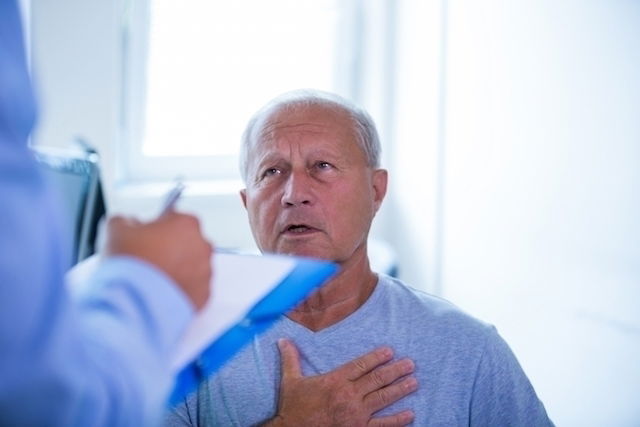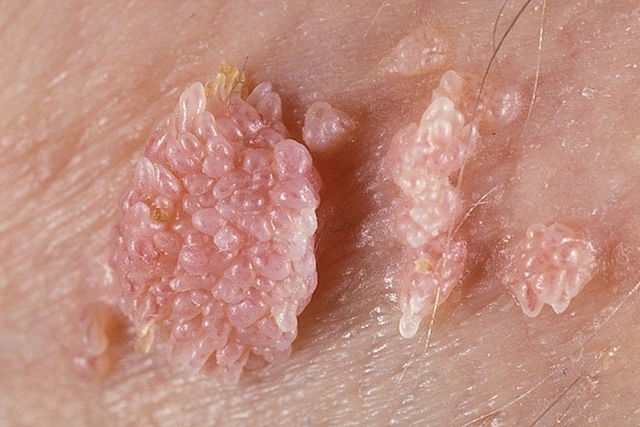Pimples on the penis are usually benign and can emerge at any age. They are usually related to mild conditions such as pearly penile papules or Fordyce spots. However, other more serious conditions can cause these small bumps, like lichen planus, genital warts or lymphoceles.
It is normal that any change to your penis makes you feel anxious, but there is a low probability that it could be a sign of cancer. Although it is rare for lumps or pimples on the penis to be related to cancer, there are situations where it can be a symptom, particularly when the pimple is associated with other symptoms, like wounds that do not heal and discharge.
If you are unsure of any visible changes or abnormalities in your penis, you should see your urologist to identify the problem and start treatment as needed.

What causes bumps on the penis?
The most common causes of bumps or pimples on the penis are:
1. Pearly penile papules
These papules are small, white, pimple-like lumps that can appear under the head of the penis. They are also referred to as Tyson glands, and are often mistaken for genital warts. These bumps are normal and benign glands that can appear at birth, but usually emerge during adolescence. Apart from being a cosmetic abnormality, Tyson glands cause no pain or any other major change.
Read more about what causes pearly penile papules and symptoms associated with them.
How to treat it: Usually no treatment is required, but if the papules drastically change the appearance of the penis, the urologist may recommend cryotherapy or cauterization treatments.
2. Ingrown hair
Ingrown hairs can occur when a hair does not puncture through the epidermis. Instead, it grows back and curls underneath the skin, leading to the appearance of a small red pimple, which can cause pain.
How to treat it: An ingrown hair usually improves on its own, without any treatment. However, cases of ingrown hairs with signs of inflammation or infection may be treated with a prescription antibacterial ointment. Read more about how to get rid of an ingrown hair.
3. Fordyce spots
Fordyce spots are very common, benign white or yellow spots that appear on the head or shaft of the penis. They are unrelated to any type of sexually transmitted infection. Due to hormonal changes, these spots more frequently emerge during adolescence, but they can appear at any age.
Learn more about what can cause fordyce spots and how they are treated.
How to treat it: The treatment is aimed at achieving cosmetic goals only. Procedures to remove the spots can vary, from using urethane tretinoin gel to lasering the spots. It is noted that, normally, it is not possible to completely eliminate these types of spots.
4. Genital warts
Genital warts are caused by infection of human papilloma virus, or HPV. Skin changes will be visible - although the penis skin will retain its normal colour, the skin will feel rougher when palpated (like the top of a cauliflower). Genital warts can vary in size and they are usually easily visible. Most times, they do not cause pain.
Genital warts usually appear after unprotected sexual intercourse, whether anal, vaginal or oral, with a previously infected person. Read more about how HPV presents in men.
How to treat it: If symptoms emerge, ointments such as podophyllin may be prescribed by the urologist to eliminate the warts. However, it is common for warts to come back, as it takes several years for the body several years to successfully fight off this HPV virus. Check-out more information about warts on the penis and how they can be treated.

5. Lymphocele
This is a type of hard lump that can appear on the penis shaft, especially after sexual contact or masturbation. It happens when the lymphatic system is unable to remove fluid from the penis due to the swelling, which closes the lymphatic pathways. A lymphocele usually disappears a few minutes or hours after it appears.
How to treat it: This is a benign lump that disappears on its own and doesn’t require any medical treatment. Massaging the lump can help drain the fluid faster. If the lump doesn’t disappear within hours, consult your urologist to identify the cause and start treatment.
6. Lichen planus
Lichen planus is a skin irritation that can affect the penis. It appears as small itchy bumps, pimples or red lumps. The cause of this problem is not known, but it usually goes away on its own after a few weeks and may reappear several times over the years.
How to treat it: Treatment only helps to reduce symptoms and, in most cases, is done with the use of topical corticosteroids. Your doctor may also recommend a antihistamine, especially if you are experiencing severe itching.
7. Peyronie's disease
Peyronie's disease is the development of plaque, or scarring, in the corpus cavernosum of the penis, and can manifest as hard lumps localized to one side. Other symptoms such as a painful erection or curving of the penis during erection are also common. The cause of Peyronie's is unknown.
How to treat it: The urologist may inject collagen or verapamil directly into the lump to reduce the scarring production that is causing the lump to grow, but in most cases, surgery is needed to correct the changes.
8. Penile cancer
Penile cancer is one of the rarest forms of cancer. It can cause the appearance of lumps, ulcers or sores, particularly on the head of the penis. This type of cancer is more common in men over 60 who have a history of smoking and lack adequate hygiene habits. Penile cancer can also occur when there is exposure of the area to ultraviolet radiation or when there is prolonged exposure to irritants.
How to treat it: Treatment almost always starts with surgery to remove as many cancer cells as possible, followed by chemotherapy or radiation. In more severe cases, it may be necessary to remove the penis to prevent cancer from spreading to other parts of the body.
9. Allergy
Skin allergies are one of the most common and least severe reasons for pimples or bumps on the penis. They can appear following the use of soaps, condoms, lubricants or even after contact with specific fabric, like synthetic-based fabric instead of cotton-based ones.
How to treat: It is important to identify what is causing the allergy so that you can avoid contact with the fabric or substance. Using cotton-based fabrics and mild soaps when cleansing the genital area is also advised. You should avoid chemical or scented products. If you suspect a latex allergy, you should avoid using latex condoms.
10. Genital herpes
Genital herpes is a sexually-transmitted infection caused by the herpes simplex virus. It is spread through unprotected sex and can lead to symptoms like bumps or lumps on the penis which erupt into wounds. These wounds are often painful and itchy and can appear in the perianal area. Learn more about the symptoms associated with genital herpes.
How to treat: If you notice symptoms following unprotected sex, you are advised to consult your family doctor for a clinical evaluation. If a diagnosis is confirmed, it is important to follow treatment as prescribed, and to notify your sexual partner to also start treatment,
11. Molloscum contagiosa
Molloscum contagiosa is an infectious disease caused by the Poxvirus. IT can affect the genital region and can cause symptoms like small, painless rashes or bumps that are skin-colored, except on the hands or feet. The rashes and/or bumps are usually small, ranging from 2 to 5 mm in diameter, however people with weaker immune system may notice sizes of 15 mm in diameter.
This infection is transmitted through direct contact with the lumps during sexual contact or from sharing contaminated clothes or towels with infected people.
How to treat: Treatment should be guided by a dermatologist, who may prescribe topical medications like imiquimod 5% ou tretinoin. The doctor may also recommend laser therapy or cryotherapy.
12. Lichen nitidus
Lichen nitidus is a rare and chronic skin inflammation that is associate with small skin-colored pimples in the genital area, skin folds, abdomen and chest. These bumps are usually asymptomatic, but may itch at times.
How to treat: Generally, lichen nitidus resolves on its own within months to a year without any specific interventions. However, symptomatic pimples that cause discomfort or are visually displeasing can be managed with topical or oral corticosteroids.
